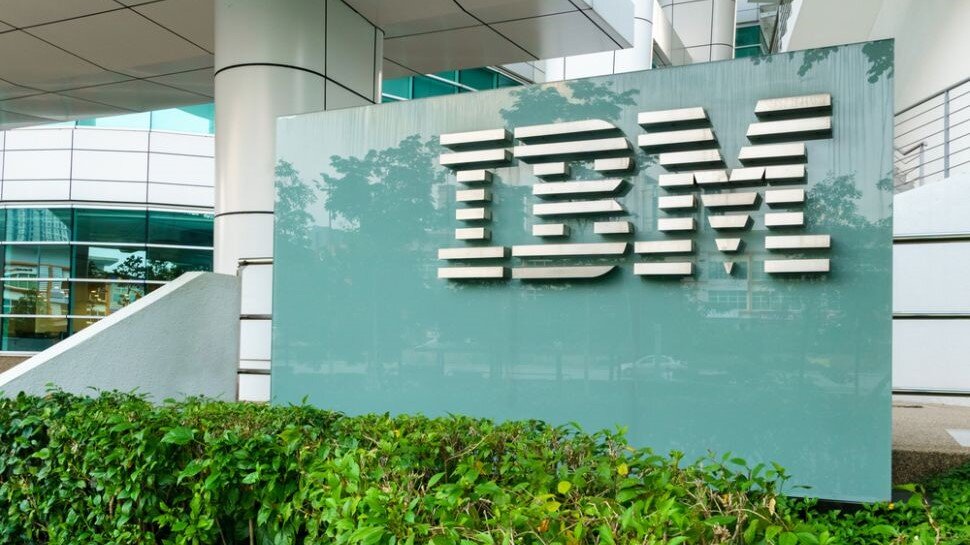Search the Community
Showing results for tags 'ibm'.
-
IBM has announced its acquisition of HashiCorp Inc., a leading multi-cloud infrastructure automation company, for $6.4 billion! This acquisition is poised to revolutionize the hybrid cloud landscape, offering enterprises a comprehensive end-to-end solution to navigate the complexities of today’s AI-driven application growth. Let’s look at the details of this cloud changing acquisition and its implications […] The article Analyzing IBM’s Acquisition of HashiCorp: A Game-Changer in Hybrid Cloud Management appeared first on Build5Nines. View the full article
-
- hashicorp
- acquisitions
-
(and 1 more)
Tagged with:
-
IBM has confirmed it has entered into a definitive agreement with HashiCorp in which it will acquire the California-based software company for $35 per share, equating to a $6.4 billion deal. In its announcement, IBM said the acquisition of HashiCorp is designed to bolster its position in the hybrid cloud and AI markets. Rather than selling off its business to IBM and closing down, HashiCorp has confirmed that it will continue to build products and services, but operating as a division of IBM Software with the backing of a much bigger company. IBM and HashiCorp Speaking about the deal, IBM CEO Arvind Krishna said: “Enterprise clients are wrestling with an unprecedented expansion in infrastructure and applications across public and private clouds, as well as on-prem environments.” Krishna added: “HashiCorp has a proven track record of enabling clients to manage the complexity of today's infrastructure and application sprawl. Combining IBM's portfolio and expertise with HashiCorp's capabilities and talent will create a comprehensive hybrid cloud platform designed for the AI era.” IBM likes what it sees in the deal, revealing an “attractive financial opportunity” and the potential to expand the total addressable market. The deal also aligns with the company’s broader strategy. In IBM’s most recent earnings call, CFO Jim Kavanaugh revealed that around 70% of HashiCorp’s revenue currently comes from US companies, adding that only around one in five of the Forbes Global 2000 are HashiCorp customers, alluding to the potential for scaling the business under the IBM umbrella. In the week leading up to the announcement, HashiCorp shares rose by around 34.8%. IBM investors seemed less sure about the deal, with share prices seeing a less impressive 1.6% uptick. More from TechRadar Pro These are the best cloud hosting providers around right nowIBM Consulting is the latest to order an immediate return to officeStore your data off-prem with the best cloud storage and best cloud backup tools View the full article
-
Everyone knew HashiCorp was attempting to find a buyer. Few suspected it would be IBM. View the full article
-
Today we announced that HashiCorp has signed an agreement to be acquired by IBM to accelerate the multi-cloud automation journey we started almost 12 years ago. I’m hugely excited by this announcement and believe this is an opportunity to further the HashiCorp mission and to expand to a much broader audience with the support of IBM. When we started the company in 2012, the cloud landscape was very different than today. Mitchell and I were first exposed to public clouds as hobbyists, experimenting with startup ideas, and later as professional developers building mission-critical applications. That experience made it clear that automation was absolutely necessary for cloud infrastructure to be managed at scale. The transformative impact of the public cloud also made it clear that we would inevitably live in a multi-cloud world. Lastly, it was clear that adoption of this technology would be driven by our fellow practitioners who were reimagining the infrastructure landscape. We founded HashiCorp with a mission to enable cloud automation in a multi-cloud world for a community of practitioners. Today, I’m incredibly proud of everything that we have achieved together. Our products are downloaded hundreds of millions of times each year by our passionate community of users. Each year, we certify tens of thousands of new users on our products, who use our tools each and every day to manage their applications and infrastructure. We’ve partnered with thousands of customers, including hundreds of the largest organizations in the world, to power their journey to multi-cloud. They have trusted us with their mission-critical applications and core infrastructure. One of the most rewarding aspects of infrastructure is quietly underpinning incredible applications around the world. We are proud to enable millions of players to game together, deliver loyalty points for ordering coffee, connect self-driving cars, and secure trillions of dollars of transactions daily. This is why we’ve always believed that infrastructure enables innovation. The HashiCorp portfolio of products has grown significantly since we started the company. We’ve continued to work with our community and customers to identify their challenges in adopting multi-cloud infrastructure and transitioning to zero trust approaches to security. These challenges have in turn become opportunities for us to build new products and services on top of the HashiCorp Cloud Platform. This brings us to why I’m excited about today's announcement. We will continue to build products and services as HashiCorp, and will operate as a division inside IBM Software. By joining IBM, HashiCorp products can be made available to a much larger audience, enabling us to serve many more users and customers. For our customers and partners, this combination will enable us to go further than as a standalone company. The community around HashiCorp is what has enabled our success. We will continue to be deeply invested in the community of users and partners who work with HashiCorp today. Further, through the scale of the IBM and Red Hat communities, we plan to significantly broaden our reach and impact. While we are more than a decade into HashiCorp, we believe we are still in the early stages of cloud adoption. With IBM, we have the opportunity to help more customers get there faster, to accelerate our product innovation, and to continue to grow our practitioner community. I’m deeply appreciative of the support of our users, customers, employees, and partners. It has been an incredibly rewarding journey to build HashiCorp to this point, and I’m looking forward to this next chapter. Additional Information and Where to Find It HashiCorp, Inc. (“HashiCorp”), the members of HashiCorp’s board of directors and certain of HashiCorp’s executive officers are participants in the solicitation of proxies from stockholders in connection with the pending acquisition of HashiCorp (the “Transaction”). HashiCorp plans to file a proxy statement (the “Transaction Proxy Statement”) with the Securities and Exchange Commission (the “SEC”) in connection with the solicitation of proxies to approve the Transaction. David McJannet, Armon Dadgar, Susan St. Ledger, Todd Ford, David Henshall, Glenn Solomon and Sigal Zarmi, all of whom are members of HashiCorp’s board of directors, and Navam Welihinda, HashiCorp’s chief financial officer, are participants in HashiCorp’s solicitation. Information regarding such participants, including their direct or indirect interests, by security holdings or otherwise, will be included in the Transaction Proxy Statement and other relevant documents to be filed with the SEC in connection with the Transaction. Additional information about such participants is available under the captions “Board of Directors and Corporate Governance,” “Executive Officers” and “Security Ownership of Certain Beneficial Owners and Management” in HashiCorp’s definitive proxy statement in connection with its 2023 Annual Meeting of Stockholders (the “2023 Proxy Statement”), which was filed with the SEC on May 17, 2023 (and is available at https://www.sec.gov/ix?doc=/Archives/edgar/data/1720671/000114036123025250/ny20008192x1_def14a.htm). To the extent that holdings of HashiCorp’s securities have changed since the amounts printed in the 2023 Proxy Statement, such changes have been or will be reflected on Statements of Change in Ownership on Form 4 filed with the SEC (which are available at https://www.sec.gov/cgi-bin/browse-edgar?action=getcompany&CIK=0001720671&type=&dateb=&owner=only&count=40&search_text=). Information regarding HashiCorp’s transactions with related persons is set forth under the caption “Related Person Transactions” in the 2023 Proxy Statement. Certain illustrative information regarding the payments to that may be owed, and the circumstances in which they may be owed, to HashiCorp’s named executive officers in a change of control of HashiCorp is set forth under the caption “Executive Compensation—Potential Payments upon Termination or Change in Control” in the 2023 Proxy Statement. With respect to Ms. St. Ledger, certain of such illustrative information is contained in the Current Report on Form 8-K filed with the SEC on June 7, 2023 (and is available at https://www.sec.gov/ix?doc=/Archives/edgar/data/1720671/000162828023021270/hcp-20230607.htm). Promptly after filing the definitive Transaction Proxy Statement with the SEC, HashiCorp will mail the definitive Transaction Proxy Statement and a WHITE proxy card to each stockholder entitled to vote at the special meeting to consider the Transaction. STOCKHOLDERS ARE URGED TO READ THE TRANSACTION PROXY STATEMENT (INCLUDING ANY AMENDMENTS OR SUPPLEMENTS THERETO) AND ANY OTHER RELEVANT DOCUMENTS THAT HASHICORP WILL FILE WITH THE SEC WHEN THEY BECOME AVAILABLE BECAUSE THEY WILL CONTAIN IMPORTANT INFORMATION. Stockholders may obtain, free of charge, the preliminary and definitive versions of the Transaction Proxy Statement, any amendments or supplements thereto, and any other relevant documents filed by HashiCorp with the SEC in connection with the Transaction at the SEC’s website (http://www.sec.gov). Copies of HashiCorp’s definitive Transaction Proxy Statement, any amendments or supplements thereto, and any other relevant documents filed by HashiCorp with the SEC in connection with the Transaction will also be available, free of charge, at HashiCorp’s investor relations website (https://ir.hashicorp.com/), or by emailing HashiCorp’s investor relations department (ir@hashicorp.com). Forward-Looking Statements This communication may contain forward-looking statements that involve risks and uncertainties, including statements regarding (i) the Transaction; (ii) the expected timing of the closing of the Transaction; (iii) considerations taken into account in approving and entering into the Transaction; and (iv) expectations for HashiCorp following the closing of the Transaction. There can be no assurance that the Transaction will be consummated. Risks and uncertainties that could cause actual results to differ materially from those indicated in the forward-looking statements, in addition to those identified above, include: (i) the possibility that the conditions to the closing of the Transaction are not satisfied, including the risk that required approvals from HashiCorp’s stockholders for the Transaction or required regulatory approvals to consummate the Transaction are not obtained, on a timely basis or at all; (ii) the occurrence of any event, change or other circumstance that could give rise to a right to terminate the Transaction, including in circumstances requiring HashiCorp to pay a termination fee; (iii) possible disruption related to the Transaction to HashiCorp’s current plans, operations and business relationships, including through the loss of customers and employees; (iv) the amount of the costs, fees, expenses and other charges incurred by HashiCorp related to the Transaction; (v) the risk that HashiCorp’s stock price may fluctuate during the pendency of the Transaction and may decline if the Transaction is not completed; (vi) the diversion of HashiCorp management’s time and attention from ongoing business operations and opportunities; (vii) the response of competitors and other market participants to the Transaction; (viii) potential litigation relating to the Transaction; (ix) uncertainty as to timing of completion of the Transaction and the ability of each party to consummate the Transaction; and (x) other risks and uncertainties detailed in the periodic reports that HashiCorp files with the SEC, including HashiCorp’s Annual Report on Form 10-K. All forward-looking statements in this communication are based on information available to HashiCorp as of the date of this communication, and, except as required by law, HashiCorp does not assume any obligation to update the forward-looking statements provided to reflect events that occur or circumstances that exist after the date on which they were made.View the full article
-
A paper released during the SIGBOVIK 2024 conference details an attempt to simulate the IBM ‘quantum utility’ experiment on a Commodore 64. The authors claim the experiment was a success. View the full article
-
- commodore
- commodore 64
-
(and 2 more)
Tagged with:
-
In today's digitally driven world, data security and privacy are paramount concerns for organizations across all industries. With the increasing sophistication of cyber threats and the ever-evolving landscape of privacy regulations, safeguarding sensitive information has become more critical than ever, especially when it comes to core systems like IBM Mainframe. The post Safeguarding Data Security and Privacy on IBM Mainframe: A Comprehensive Approach appeared first on Security Boulevard. View the full article
-
- data privacy
- ibm
-
(and 3 more)
Tagged with:
-
Healthcare data is being generated at an increased rate with the proliferation of connected medical devices and clinical systems. Some examples of these data are time-sensitive patient information, including results of laboratory tests, pathology reports, X-rays, digital imaging, and medical devices to monitor a patient’s vital signs, such as blood pressure, heart rate, and temperature. These different types of data can be difficult to work with, but when combined they can be used to build data pipelines and machine learning (ML) models to address various challenges in the healthcare industry, like the prediction of patient outcome, readmission rate, or disease progression. In this post, we demonstrate how to bring data from different sources, like Snowflake and connected health devices, to form a healthcare data lake on Amazon Web Services (AWS). We also explore how to use this data with IBM Watson to build, train, and deploy ML models. You can learn how to integrate model endpoints with clinical health applications to generate predictions for patient health conditions. Solution overview The main parts of the architecture we discuss are (Figure 1): Using patient data to improve health outcomes Healthcare data lake formation to store patient health information Analyzing clinical data to improve medical research Gaining operational insights from healthcare provider data Providing data governance to maintain the data privacy Building, training, and deploying an ML model Integration with the healthcare system Figure 1. Data pipeline for the healthcare industry using IBM CP4D on AWS IBM Cloud Pak for Data (CP4D) is deployed on Red Hat OpenShift Service on AWS (ROSA). It provides the components IBM DataStage, IBM Watson Knowledge Catalogue, IBM Watson Studio, IBM Watson Machine Learning, plus a wide variety of connections with data sources available in a public cloud or on-premises. Connected health devices, on the edge, use sensors and wireless connectivity to gather patient health data, such as biometrics, and send it to the AWS Cloud through Amazon Kinesis Data Firehose. AWS Lambda transforms the data that is persisted to Amazon Simple Storage Service (Amazon S3), making that information available to healthcare providers. Amazon Simple Notification Service (Amazon SNS) is used to send notifications whenever there is an issue with the real-time data ingestion from the connected health devices. In case of failures, messages are sent via Amazon SNS topics for rectifying and reprocessing of failure messages. DataStage performs ETL operations and move patient historical information from Snowflake into Amazon S3. This data, combined with the data from the connected health devices, form a healthcare data lake, which is used in IBM CP4D to build and train ML models. The pipeline described in architecture uses Watson Knowledge Catalogue, which provides data governance framework and artifacts to enrich our data assets. It protects sensitive patient information from unauthorized access, like individually identifiable information, medical history, test results, or insurance information. Data protection rules define how to control access to data, mask sensitive values, or filter rows from data assets. The rules are automatically evaluated and enforced each time a user attempts to access a data asset in any governed catalog of the platform. After this, the datasets are published to Watson Studio projects, where they are used to train ML models. You can develop models using Jupyter Notebook, IBM AutoAI (low-code), or IBM SPSS modeler (no-code). For the purpose of this use case, we used logistic regression algorithm for classifying and predicting the probability of an event, such as disease risk management to assist doctors in making critical medical decisions. You can also build ML models using algorithms like Classification, Random Forest, and K-Nearest Neighbor. These are widely used to predict disease risk. Once the models are trained, they are exposed as endpoints with Watson Machine Learning and integrated with the healthcare application to generate predictions by analyzing patient symptoms. The healthcare applications are a type of clinical software that offer crucial physiological insights and predict the effects of illnesses and possible treatments. It provides built-in dashboards that display patient information together with the patient’s overall metrics for outcomes and treatments. This can help healthcare practitioners gain insights into patient conditions. It also can help medical institutions prioritize patients with more risk factors and curate clinical and behavioral health plans. Finally, we are using IBM Security QRadar XDR SIEM to collect, process, and aggregate Amazon Virtual Private Cloud (Amazon VPC) flow logs, AWS CloudTrail logs, and IBM CP4D logs. QRadar XDR uses this information to manage security by providing real-time monitoring, alerts, and responses to threats. Healthcare data lake A healthcare data lake can help health organizations turn data into insights. It is centralized, curated, and securely stores data on Amazon S3. It also enables you to break down data silos and combine different types of analytics to gain insights. We are using the DataStage, Kinesis Data Firehose, and Amazon S3 services to build the healthcare data lake. Data governance Watson Knowledge Catalogue provides an ML catalogue for data discovery, cataloging, quality, and governance. We define policies in Watson Knowledge Catalogue to enable data privacy and overall access to and utilization of this data. This includes sensitive data and personal information that needs to be handled through data protection, quality, and automation rules. To learn more about IBM data governance, please refer to Running a data quality analysis (Watson Knowledge Catalogue). Build, train, and deploy the ML model Watson Studio empowers data scientists, developers, and analysts to build, run, and manage AI models on IBM CP4D. In this solution, we are building models using Watson Studio by: Promoting the governed data from Watson Knowledge Catalogue to Watson Studio for insights Using ETL features, such as built-in search, automatic metadata propagation, and simultaneous highlighting, to process and transform large amounts of data Training the model, including model technique selection and application, hyperparameter setting and adjustment, validation, ensemble model development and testing; algorithm selection; and model optimization Evaluating the model based on metric evaluation, confusion matrix calculations, KPIs, model performance metrics, model quality measurements for accuracy and precision Deploying the model on Watson Machine Learning using online deployments, which create an endpoint to generate a score or prediction in real time Integrating the endpoint with applications like health applications, as demonstrated in Figure 1 Conclusion In this blog, we demonstrated how to use patient data to improve health outcomes by creating a healthcare data lake and analyzing clinical data. This can help patients and healthcare practitioners make better, faster decisions and prioritize cases. We also discussed how to build an ML model using IBM Watson and integrate it with healthcare applications for health analysis. Additional resources IBM on AWS Partner Page Deploying IBM Cloud Pak for Data on Red Hat OpenShift Service on AWS Exporting Cloud Pak for Data audit records to QRadar IBM Cloud Pak for Data on the AWS Marketplace IBM Cloud Pak for Security on the AWS Marketplace View the full article
-
AWS Database Migration Service (AWS DMS) now supports IBM Db2 z/OS as a source for the full load operational mode. Using AWS Schema Conversion Tool (SCT), you can convert schemas and code objects from IBM DB2 z/OS to Aurora MySQL, Aurora PostgreSQL, MySQL and PostgreSQL targets. Once you have the schema and objects in a format compatible with target database you can utilize AWS DMS to migrate data from IBM DB2 running on the z/OS operating system to any AWS DMS supported targets. View the full article
-

Rust in Linux 5.20 | Deepfake Hiring Fraud | IBM WFH ‘New Normal’
Devops.com posted a topic in Linux
In this week’s The Long View: Linus says next release will support Rust, FBI warns scammers are getting hired in deepfake interviews, and 80% of IBM staff stay at home. The post Rust in Linux 5.20 | Deepfake Hiring Fraud | IBM WFH ‘New Normal’ appeared first on DevOps.com. View the full article -
Modernizers relish platform capabilities that spur innovation, lower cost, and generate more revenue. Businesses with IBM Z are under the same pressure as all other businesses to digitally transform. Those that are fully aware of their IBM Z capabilities choose to modernize on the platform. When Modernizing on IBM Z, What Kinds of Initiatives Do […] View the full article
-
DevOps practices, processes and solutions help businesses accelerate their digital transformation by improving the speed and quality of software development. DevOps tools enable teams to do their job more efficiently by embracing automation, increasing agility and building speed, versatility and security into the framework. At the IBM DevOps Virtual Summit, attendees will learn how to […] The post Accelerate Your Digital Transformation with IBM appeared first on DevOps.com. View the full article
-
IBM this week announced its intention to spin out a new company next year focused primarily on managed infrastructure as part of a plan to focus more on hybrid cloud computing and artificial intelligence (AI) initiatives. IBM is combining the Red Hat assets it gained last year via a $34 billion acquisition with its investment […] The post DevOps Deeper Dive: IBM to ‘Maniacally Focus’ on Hybrid Cloud, AI appeared first on DevOps.com. View the full article
-
Did you know the Red Hat site reliability engineering (SRE) team has been managing Kubernetes at scale since 2015? We have more experience managing Kubernetes than most cloud providers. This commitment to proactively serving our customers has not only fostered our Kubernetes expertise, it’s given us the scale and efficiencies to restructure our pricing and pass these savings directly on to you. Today, we are announcing, along with Microsoft and IBM, significant price reductions for Red Hat OpenShift Dedicated, Azure Red Hat OpenShift and Red Hat OpenShift on IBM Cloud, coupled with an improved SLA of 99.95% uptime. We have restructured our pricing options to make Red Hat OpenShift more flexible and accessible to our customers. View the full article
-
AWS Storage Gateway now supports IBM Spectrum Protect 8.1.10 on Tape Gateway, enabling you to backup and archive data from IBM Spectrum Protect to AWS without changing your backup workflows. With this announcement, Tape Gateway supports IBM Spectrum Protect 8.1.10 running on Red Hat Enterprise Linux (RHEL) version 7.6 or later, or SUSE Linux Enterprise Server (SLES) version 12, Service Pack 2 or later, and Microsoft Windows Server 2012 R2 or Microsoft Windows Server 2016. View the full article
-
IBM this week announced it plans to acquire Instana, a provider of an application performance management (APM) platform that is optimized for microservices. Robin Hernandez, vice president of hybrid cloud management and AIOps for IBM, said Instana will plug an observability gap that has emerged in IBM’s portfolio as organizations start to build and deploy […] The post IBM Acquires Instana to Advance Observability Strategy appeared first on DevOps.com. View the full article
-
In a historic collaboration initiative, IBM and AT&T announced their partnership on building a hybrid cloud that’ll be powered by 5G. The idea here is to use the 5G power provided by AT&T to manage applications hosted in a hybrid cloud architecture using the IBM Cloud Satellite. The key benefits for organizations being introduced using this partnership are ease and convenience of application management, enhanced user experience and cybersecurity. View the full article
-
Application modernization is the process of updating existing legacy applications and modernizing their infrastructure, architecture and features, by using modern technology stacks. Monolithic applications are difficult to update and expensive to scale. In response to today’s business requirements of growth and innovation, enterprises must deliver new applications in an agile fashion while minimizing risk. Many […] The post Application Modernization Video with IBM’s Rosalind Radcliffe appeared first on DevOps.com. View the full article
- 1 reply
-
- ibm
- monolithic
-
(and 1 more)
Tagged with:
-
ServiceNow and IBM this week announced that the Watson artificial intelligence for IT operations (AIOps) platform from IBM will be integrated with the IT service management (ITSM) platform from ServiceNow. Pablo Stern, senior vice president for IT workflow products for ServiceNow, said once that capability becomes available later this year on the Now platform, IT […] The post ServiceNow Partners with IBM on AIOps appeared first on DevOps.com. View the full article
- 1 reply
-
- ibm
- servicenow
-
(and 1 more)
Tagged with:
-
IBM Quantum joins hands with The Coding School to offer the first-of-its-kind quantum computing courses for high school students. The course aims to provide high-quality STEM education and make quantum education accessible worldwide. The online course is free and would be offered to 5,000 students. View the full article
-
IBM has recently decided to split its IT services business off into a new company in order to allow its Cloud and AI business to grow... The post IBM splits to focus on Cloud appeared first on DevOps Online. View the full article
-
What if IBM is spinning off the wrong business?… Amongst the growing pressures to compete in the Cloud business, IBM has announced plans to spinoff its “legacy IT” business into a separate company. The new “#1 IT services business” will have a new name, and the separation is planned to complete by the end of […] The article IBM Should Spinoff Cloud as Separate Business Named Red Hat Cloud appeared first on Build5Nines. View the full article
-
IBM recently announced a definitive agreement to acquire Instana, a German-American software firm that specializes in developing APM software. With this acquisition, IBM can further advance its Hybrid Cloud and AI technology and reinforce its AI-powered automation capabilities. View the full article
-
AWS Storage Gateway now supports IBM Spectrum Protect 8.1.10 on Tape Gateway, enabling you to backup and archive data from IBM Spectrum Protect to AWS without changing your backup workflows. With this announcement, Tape Gateway supports IBM Spectrum Protect 8.1.10 running on Red Hat Enterprise Linux (RHEL) version 7.6 or later, or SUSE Linux Enterprise Server (SLES) version 12, Service Pack 2 or later, and Microsoft Windows Server 2012 R2 or Microsoft Windows Server 2016. View the full article
-
untilABOUT IBM DEVOPS VIRTUAL SUMMIT CEOs have a consistent top priority—harness digital transformation to jumpstart growth, speed time to market, and foster innovation. With increasing focus on security, we will explore the benefits of DevSecOps and how to bring value to your organization. IBM will explore the new practice of Site Reliability Engineering and how the operations approach ensures that continuously delivered applications run efficiently and reliably with automation and data driven solutions that can reduce your meant time to resolution. Learn how IBM Cloud Software and Services can help no matter where your organization is in the journey. We will cover solutions to innovate your hybrid environment, disrupt with cloud native development, and transform your existing mainframe infrastructure. DevOps is not only an approach to IT, you do DevOps. Register
-
Forum Statistics
44.1k
Total Topics43.7k
Total Posts
.png.6dd3056f38e93712a18d153891e8e0fc.png.1dbd1e5f05de09e66333e631e3342b83.png.933f4dc78ef5a5d2971934bd41ead8a1.png)









.thumb.jpg.10b3e13237872a9a7639ecfbc2152517.jpg)